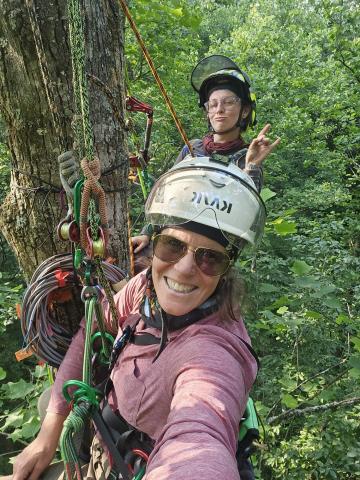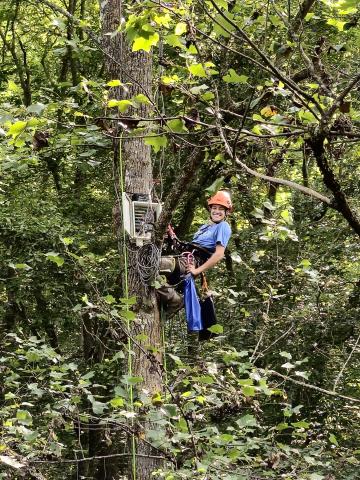Ecology

Valley Fog and Forest Function in Central Appalachia
Dr. Sybil G. Gotsch, Associate Professor of Forest Ecophysiology
Valley fog is an iconic feature of Central Appalachia that occurs when cool air masses drain and condense into low elevation areas. This phenomenon can happen throughout the year but in the mountains of Eastern Kentucky, it is most common during the morning hours of the growing season. A growing body of research from other ecosystems has found that fog or low-lying clouds can have a large impact on the way water moves through environments. In addition, cloud or fog water that is intercepted by leaves can help plants increase productivity, recover from drought and decouple tree physiology from soil moisture. While valley fog is a ubiquitous feature of the Central Appalachian landscape, its importance for forest health and the hydrology of the region are not well known and will be the focus of this work. The proposed project will quantify the frequency and duration of valley fog and link the presence of this phenomenon with canopy water cycling and tree health. In the spring and summer of 2023, microclimate sensor arrays and sap flow probes will be placed in six sites along a transect in one watershed on both the north and south-facing slopes from valley bottom to ridge top. If the work yields interesting results, our research team will expand upon this work to include mature trees and additional watersheds in Robinson Forest. Trail cameras will also be placed in the study sites to document fog presence. In addition to these continuous measures, monthly measurements of photosynthesis and leaf water potential will be made throughout the growing season to evaluate the impact of this water source on tree health and productivity.
Forest Ecophysiology
Learn more about forest ecophysiology by visiting the Forestry and Natural Resources website by clicking the link below.
Learn more about Forest Ecophysiology.
